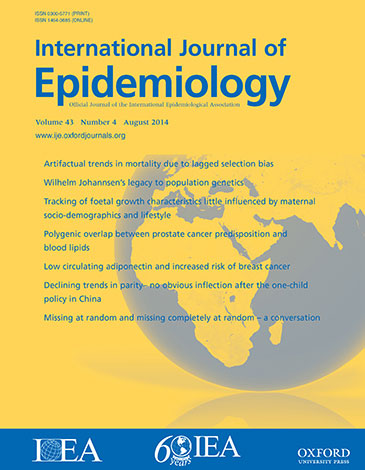Effects of smoke haze on respiratory clinic visits in Central Kalimantan, Indonesia according to different haze characteristics.
IF 5.9
2区 医学
Q1 PUBLIC, ENVIRONMENTAL & OCCUPATIONAL HEALTH
引用次数: 0
Abstract
BACKGROUND Smoke haze is a common air-pollution issue in Southeast Asia. Studies have suggested an elevated respiratory risk due to smoke-haze exposure. However, relevant studies have applied different exposure assessments in addressing haze effects and there is no unified definition of haze due to differences in its characteristics by location. The present study aimed to examine the effects of haze on respiratory health outcomes by analysing local fire activity and duration. METHODS Data for daily respiratory visits in Central Kalimantan were collected at local primary healthcare centers ('puskesmas') during the period spanning 2015-2019, encompassing two major haze episodes in the region. Particulate matter with aerodynamic diameter <10 μm and fire hotspot counts were used to determine haze days, including fire-haze and non-fire-haze days. A space-time-stratified case-crossover design was used through a conditional quasi-Poisson regression model to examine the effects of haze vs. non-haze days in each subdivision, with lags of up to five days, for different haze definitions and durations. RESULTS The risk of respiratory visits was prominent during haze days but varied by haze characteristics. There was a 36.6% (95% confidence interval: 10.2%, 69.3%) and 74.4% (18.9%, 164.6%) increased risk of respiratory visits in Pulang Pisau Regency during haze and fire haze, respectively. The risk was pronounced when the haze was characterized by longer durations. CONCLUSION Our findings suggest inconclusive effects of haze on respiratory visits to primary healthcare centers, although they appeared to be prominent in the area mainly dominated by fire haze. Haze characteristics should be analysed carefully for differences in risk patterns according to location.根据不同的雾霾特征,烟雾霾对印度尼西亚加里曼丹中部呼吸系统门诊就诊的影响。
烟雾是东南亚地区常见的空气污染问题。研究表明,暴露在烟雾中会增加呼吸风险。然而,相关研究在解决雾霾效应时采用了不同的暴露评估方法,并且由于雾霾在不同地区的特征不同,对雾霾没有统一的定义。本研究旨在通过分析当地火灾活动和持续时间来检查雾霾对呼吸系统健康结果的影响。方法在2015-2019年期间,在加里曼丹中部当地初级卫生保健中心(puskesmas)收集每日呼吸系统就诊数据,其中包括该地区两次主要的雾霾事件。空气动力学直径<10 μm的颗粒物和火灾热点数确定雾霾天数,包括火灾雾霾和非火灾雾霾天数。通过条件准泊松回归模型,使用时空分层病例交叉设计来检查每个细分中雾霾与非雾霾日的影响,对于不同的雾霾定义和持续时间,滞后时间最长为5天。结果雾霾天气呼吸道就诊风险显著,但因雾霾特征而异。在雾霾和火灾雾霾期间,Pulang Pisau Regency呼吸系统就诊的风险分别增加了36.6%(95%可信区间:10.2%,69.3%)和74.4%(18.9%,164.6%)。当雾霾的特征是持续时间较长时,这种风险就明显了。结论雾霾对初级卫生保健中心呼吸系统就诊的影响尚不明确,但在火灾雾霾为主的地区尤为突出。应仔细分析雾霾特征,以确定不同地点的风险模式的差异。
本文章由计算机程序翻译,如有差异,请以英文原文为准。
求助全文
约1分钟内获得全文
求助全文
来源期刊

International journal of epidemiology
医学-公共卫生、环境卫生与职业卫生
CiteScore
13.60
自引率
2.60%
发文量
226
审稿时长
3 months
期刊介绍:
The International Journal of Epidemiology is a vital resource for individuals seeking to stay updated on the latest advancements and emerging trends in the field of epidemiology worldwide.
The journal fosters communication among researchers, educators, and practitioners involved in the study, teaching, and application of epidemiology pertaining to both communicable and non-communicable diseases. It also includes research on health services and medical care.
Furthermore, the journal presents new methodologies in epidemiology and statistics, catering to professionals working in social and preventive medicine. Published six times a year, the International Journal of Epidemiology provides a comprehensive platform for the analysis of data.
Overall, this journal is an indispensable tool for staying informed and connected within the dynamic realm of epidemiology.
 求助内容:
求助内容: 应助结果提醒方式:
应助结果提醒方式:


